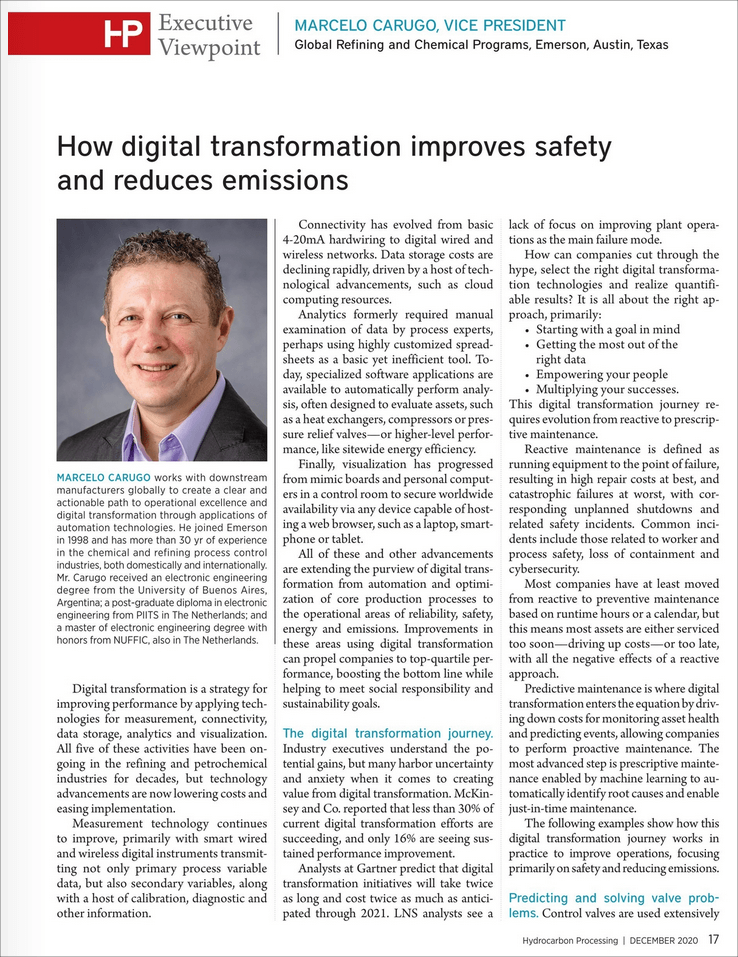 One of the things companies often struggle with when exploring digital transformation initially is where to begin efforts. Digital transformation is a forest, in the sense that it covers many, if not all areas in a manufacturing organization. But the forest is made up of individual trees, meaning it is composed of many applications, and choosing which ones to prioritize is where companies can get stuck.
One of the things companies often struggle with when exploring digital transformation initially is where to begin efforts. Digital transformation is a forest, in the sense that it covers many, if not all areas in a manufacturing organization. But the forest is made up of individual trees, meaning it is composed of many applications, and choosing which ones to prioritize is where companies can get stuck.
I discuss this selection process in a Hydrocarbon Processing Executive Viewpoint column, How Digital transformation improves safety and reduces emissions. Most companies begin with grandiose ideas to plant an entire forest at once rather than one tree at a time. My suggestion is that they should consider all areas, even those not directly related to production, as these often constitute significant costs that rob plants of profitability.
All of these and other advancements are extending the purview of digital transformation from automation and optimization of core production processes to the operational areas of reliability, safety, energy, and emissions. Improvements in these areas through the use of digital transformation can propel companies to top-quartile performance, boosting the bottom line while helping to meet social responsibility and sustainability goals.
So, there are four key areas: reliability, safety, energy, and emissions. That narrows it down somewhat, but it is still a lot of ground to cover. How does a plant pick and choose?
Digital transformation is most effectively implemented one step at a time by focusing on operational issues at the plant level. Once improvements are made to resolve one issue, the next item on the list can be addressed, eventually resulting in substantial operational improvements as one success leads to another.
The column goes into more detail, but here are two specific ideas:
Remote monitoring using smart valve controllers, such as Emerson’s Fisher FIELDVUE DVC6200 Digital Valve Controller. Using FIELDVUE Performance Diagnostics, valve operation is monitored online to evaluate and improve performance and reliability.
Monitor pressure relief valve (PRV) performance using Emerson’s Rosemount 708 Wireless Acoustic Transmitter. It provides visibility into steam traps and PRVs by accurately communicating acoustic level and temperature data—as well as device data, event status, and leak detection information via a WirelessHART network. This helps reduce product loss and emissions due to PRV leakage and simmering.
There are many more ideas capable of improving the critical four areas identified above, each of which affect plant operation and costs. How is your plant doing on these fronts? Are digital transformation efforts underway, or are you stuck deciding where to start?
Visit the Digital Valve Controllers pages at Emerson.com for more on technologies and solutions for improving final control performance. You can also connect and interact with other engineers in the Oil & Gas and Chemical Groups at the Emerson Exchange 365 community.




